
Activity Reports
Fisherman in Funakoshi
September 9, 2011
Funakoshi is located on the tip of the Ogatsu Peninsula in Ishinomaki, past the seaside town on Ogatsu Bay, and another 20 minutes by car over the mountains.
Mr Nakazato Kouichi is the leader of the Funakoshi Recovery Working Committee, a fisherman who likes jokes and always says, “I’m poor but I’m a survivor with a rich heart.”
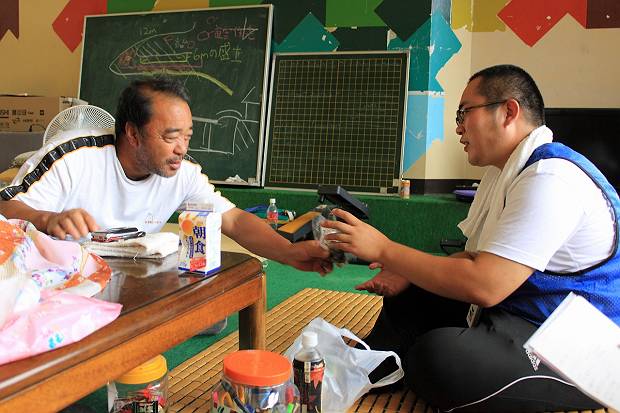
“You’ll eat everything. Here, eat this too!” says Mr Nakazato with a laugh.
The fishermen here are generous people. Suddenly gifts of ice cream and dried seaweed appeared in front of Peace Boat staff member Hirayama who is good friends with Mr. Nakazato.

“If fishermen here catch the seasonal fish, they always give them to their friends and relatives. You’re all like family to me so I’d like to give you some fish but just wait a bit longer,” says Mr Nakazato.
This is a natural fishing ground. The fishermen used to work farmed fishing grounds as well. Despite the fact that all of the farmed fishing grounds including the nets and live fish-boxes were washed away in the tsunami, in Funakoshi where fish can be caught naturally, preparations for partially re-commencing fishing activities from the fall are progressing.
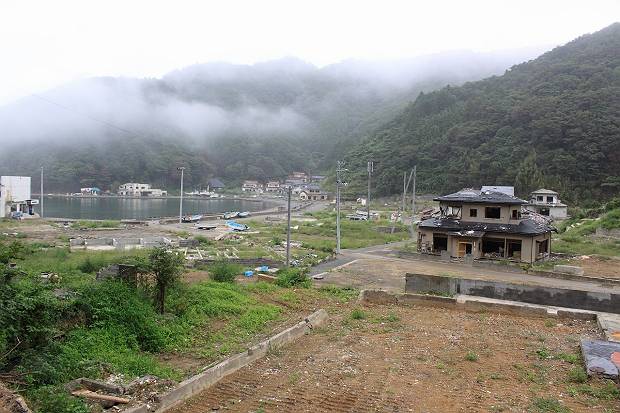
Mr Nakazato explains, “In January and February it’s Pacific cod, in March and April it’s flathead flounder, and from April to June we do the set up for farmed fish. Then from June to August it’s conger eel, in August and September it’s giant Pacific octopus, in September we exchange the nets and set up for the farmed fish, and from October to December it’s silver salmon.”
Each fisherman’s household chooses three types of fish out of these to fish. The fishermen here are busy.
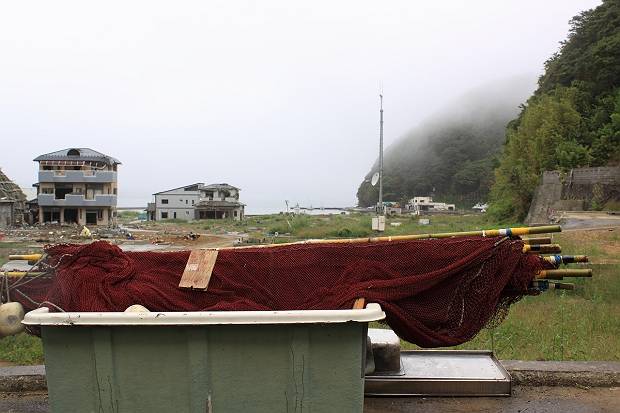
Mr Nakazato is also working on farming scallops. Scallops are seeded on the day that Yaezakura (Yae Cherry Blossoms) come into full bloom. By the end of August the scallops are about the size of a sesame seed and then in September the seeds go through a selection process. In December they are taken out of the water again, culled and then put back underwater. In May of the following year a hole is opened in the shell, a rope is threaded through and they are put back underwater again. In around October and November, shellfish such as barnacles are removed and it is two years after the initial seeding that the scallops can be harvested. When working with nature one must do things properly and it takes perseverance. Of course, it also costs money.
Peace Boat first got to know Mr Nakazato on July 2 at the Ogatsu Recovery Market. Mr Nakazato has lots of experience with deep sea fishing and has sailed oceans all over the world. In the tsunami most homes and storehouses were washed away, but miraculously Mr Nakazato’s property survived. That’s why he puts himself last and is working tirelessly to help his fellow fishermen.
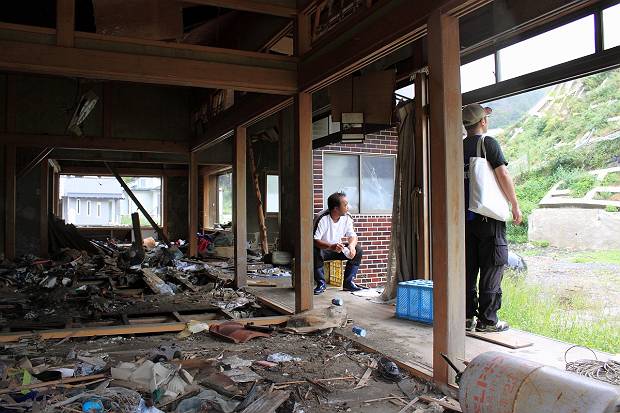
“I think I can work because I was lucky and my storehouse survived. We have to help each other otherwise we can’t go on. If I don’t fish then I can’t go on. We have to work hard now so that the people who evacuated the area want to come back,” says Mr Nakazato.
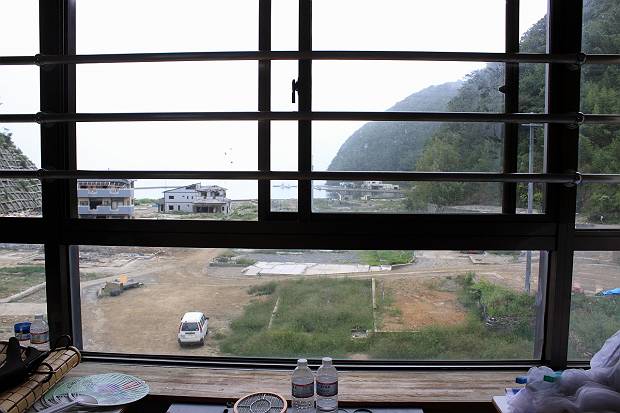
Before the disaster there were approximately 320 people living in Funakoshi. 70-80% of those people were people living on the pension. They were a community surrounded by nature and there was no shortage of food. However temporary housing could not be built in Funakoshi because there is no level ground. As a result, the people who lost their homes moved to temporary housing far away and are now living there. Even if people want to come back and live in their old community, there are less than 20 households that say they will definitely come back to Funakoshi because of how they imagine life in the future given the current miserable state of the area.
“All the people have been washed away. It will take more time for people to be able to smile from the bottom of their hearts. But if I don’t keep telling jokes I’ll get depressed. Our wives look like they are enjoying themselves because when all of you come to visit we can smile and forget about the bad stuff. But next time make sure you bring some female volunteers.” laughs Mr Nakazato who kept telling jokes right through the interview.
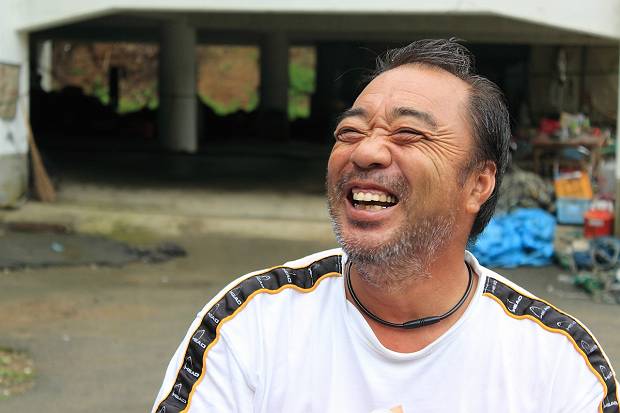
Thank you for the interview despite your busy schedule Mr. Nakazato.
Another reason for this visit was to assess the kind of volunteer support that is necessary in the area. Following this, starting from next week, the volunteers coming to help with the fishing industry activities will be helping the fishermen’s wives with various jobs.
TAGS: cleanup • debris removal • Disaster Relief • Earthquake • fishing industry • funakoshi • Ishinomaki • Japan • Kanto-Tohoku Earthquake and Tsunami • Ogatsu • Peace Boat • peaceboat • Relief • temporary housing • Tsunami • Volunteer • volunteering • Volunteers


